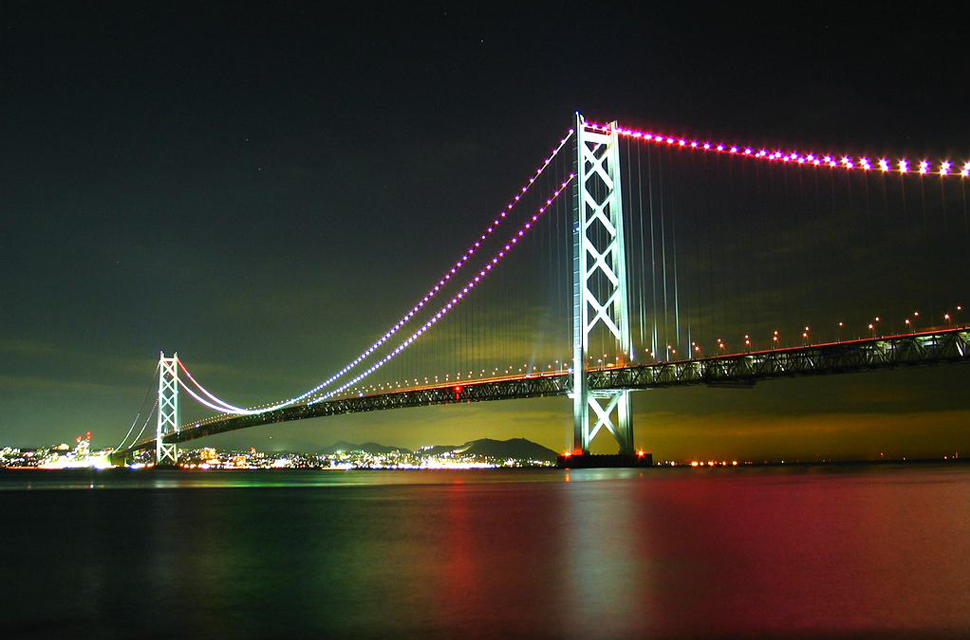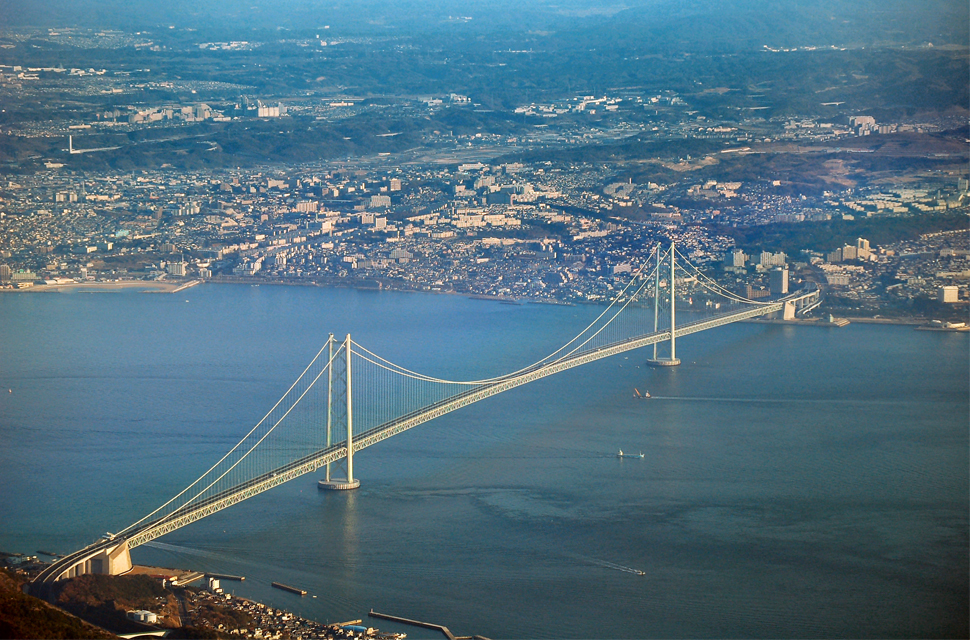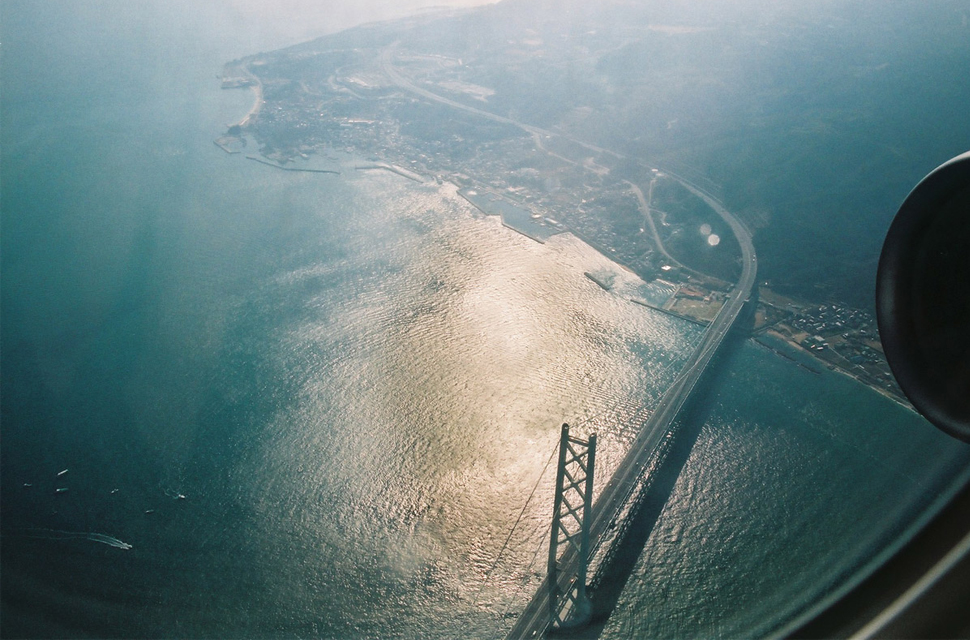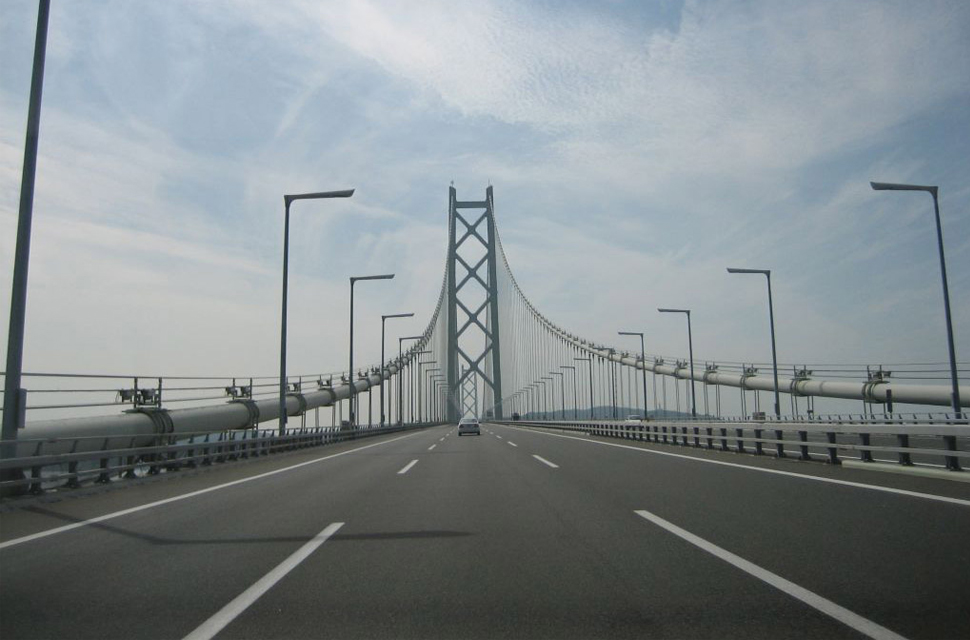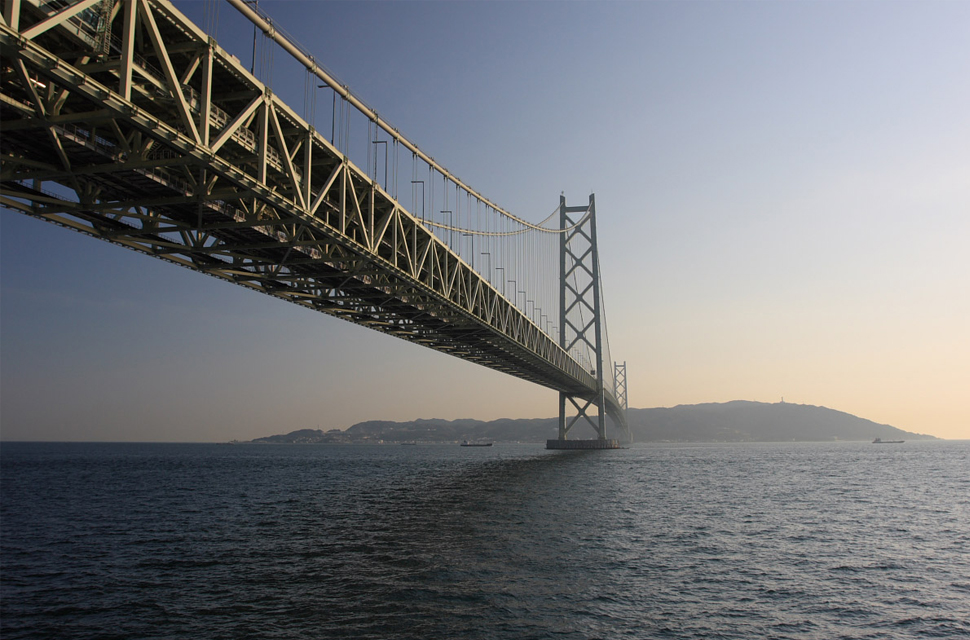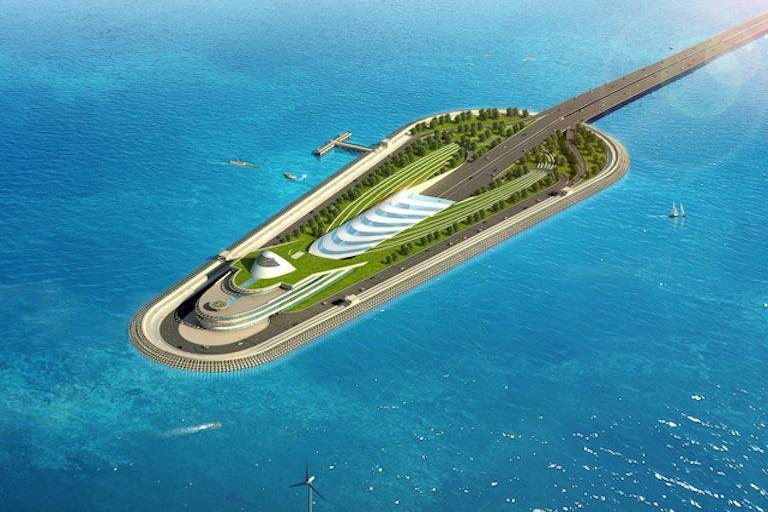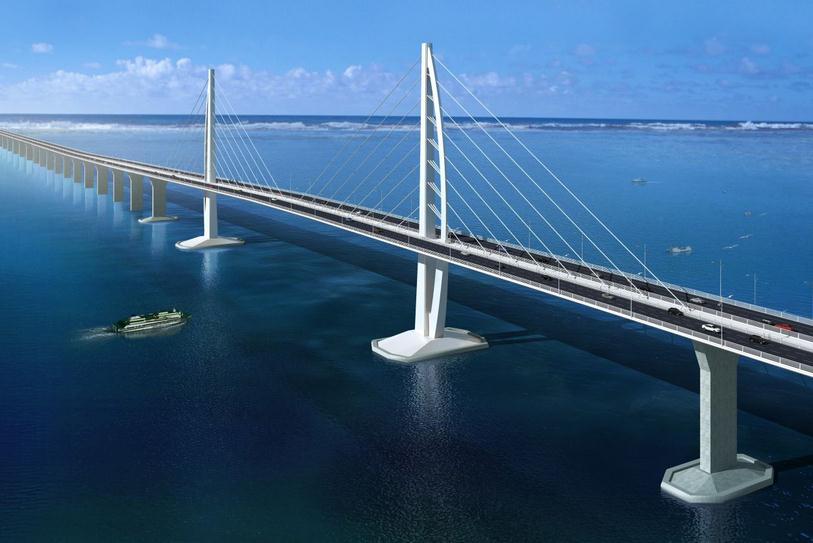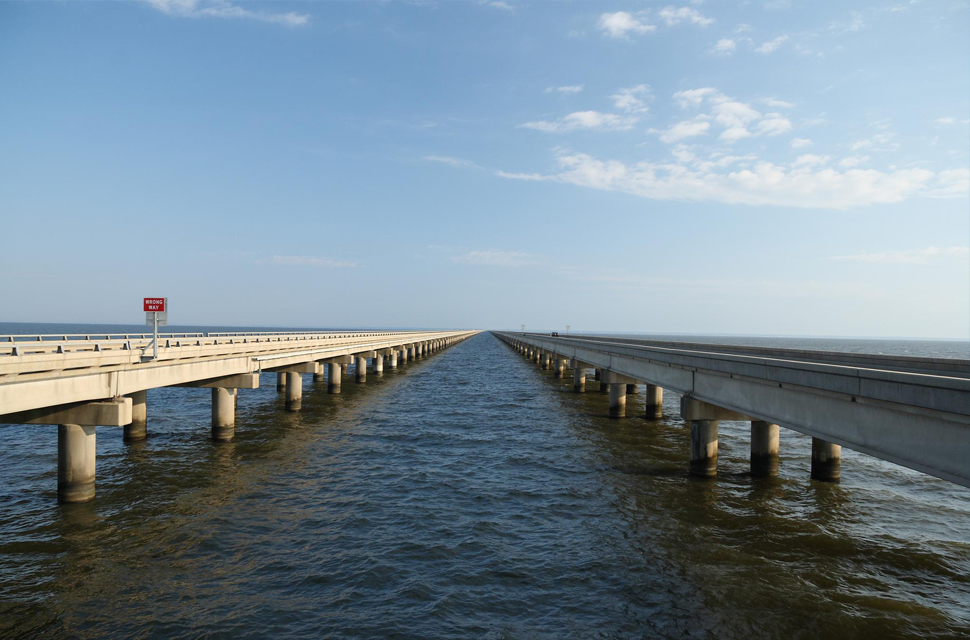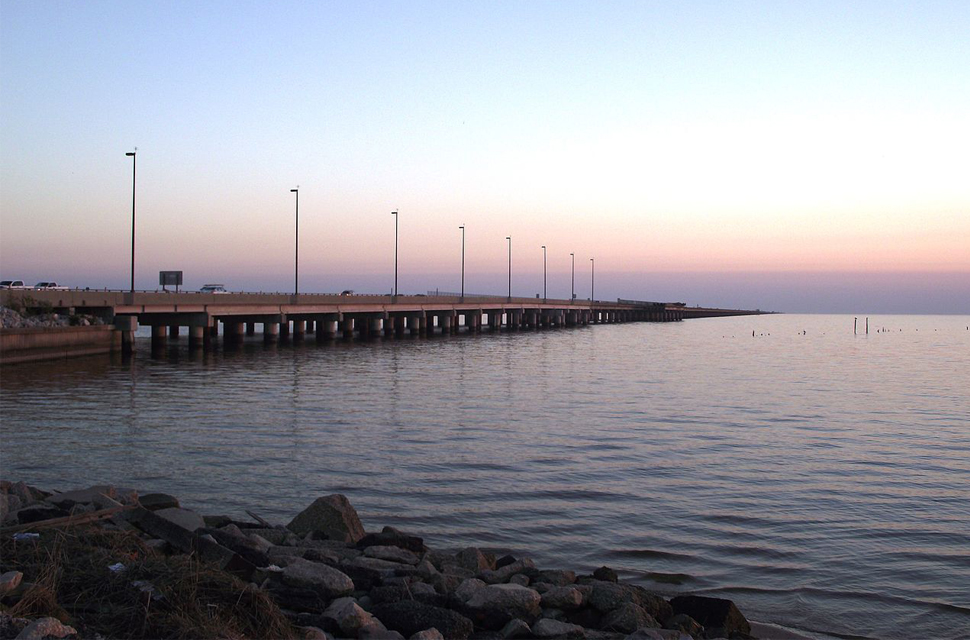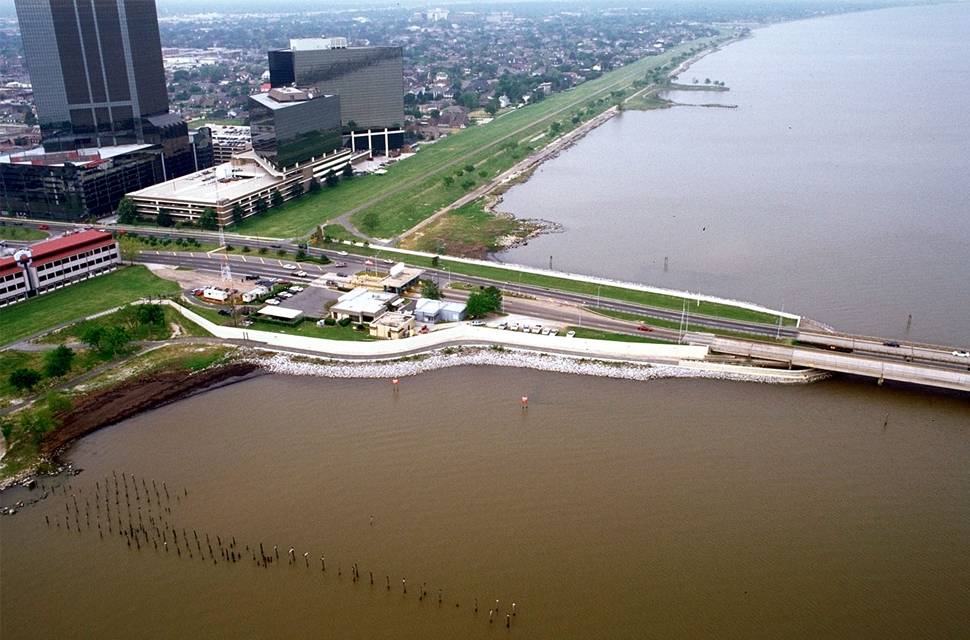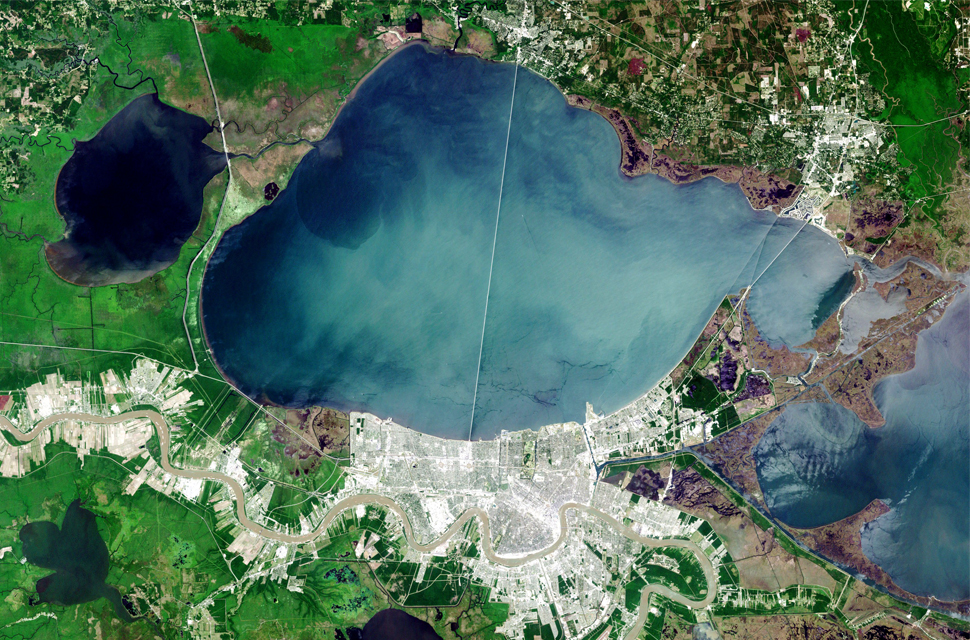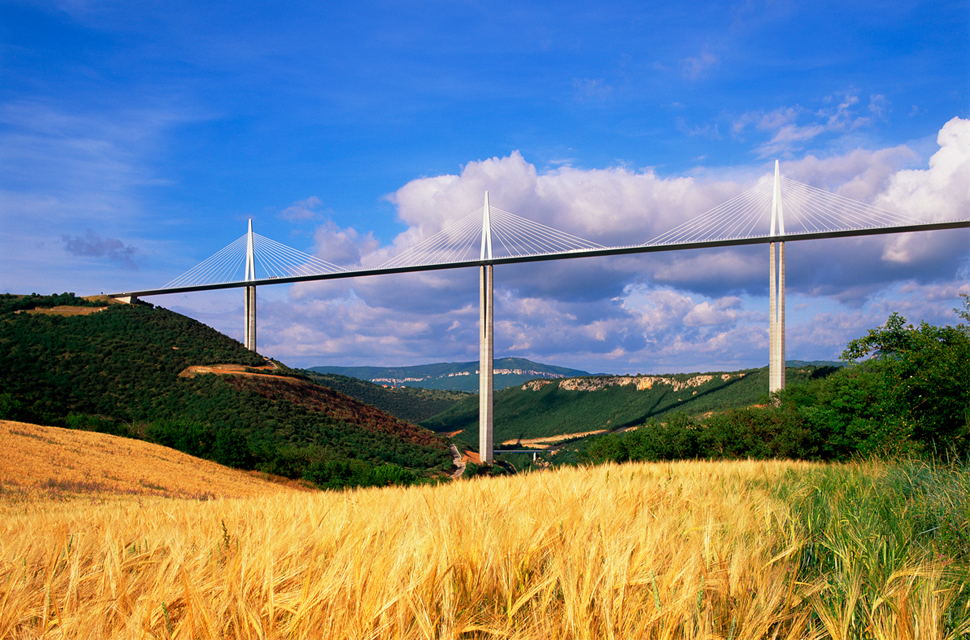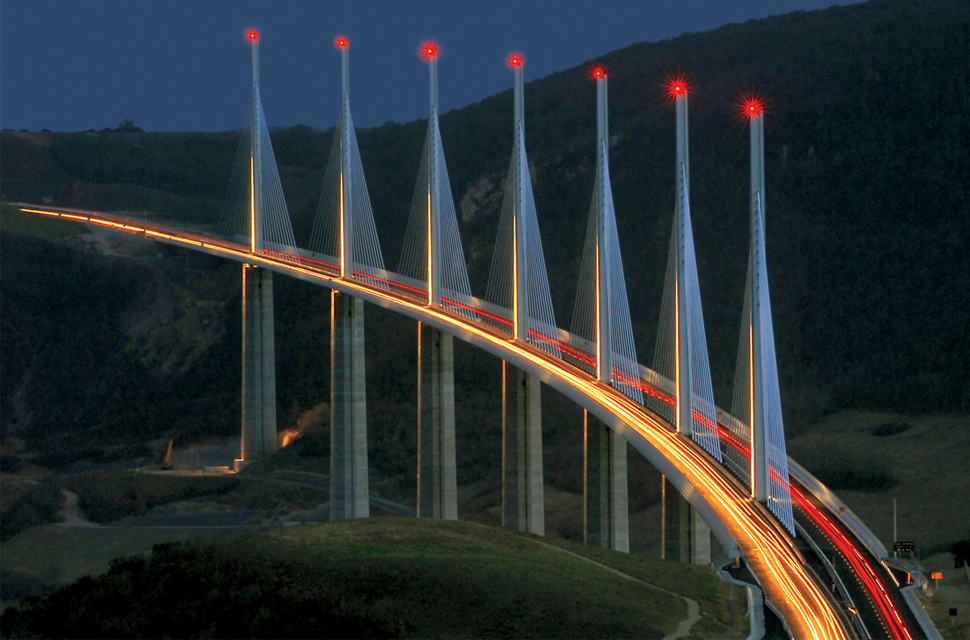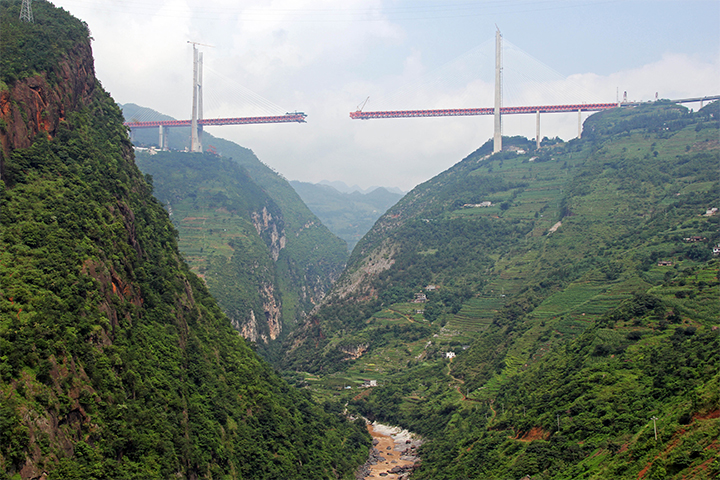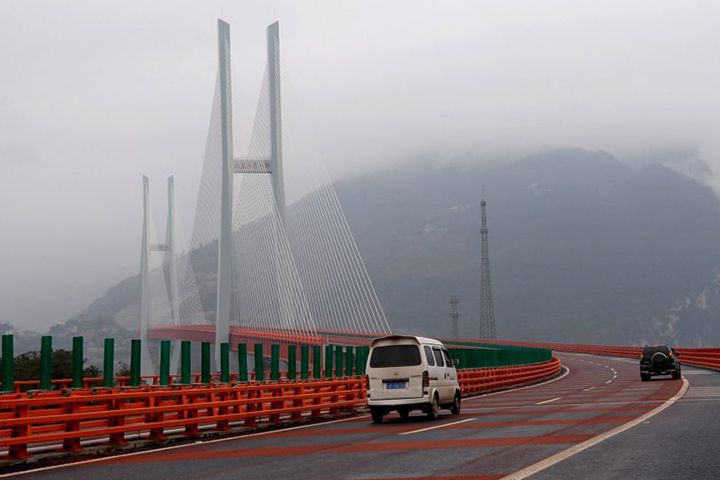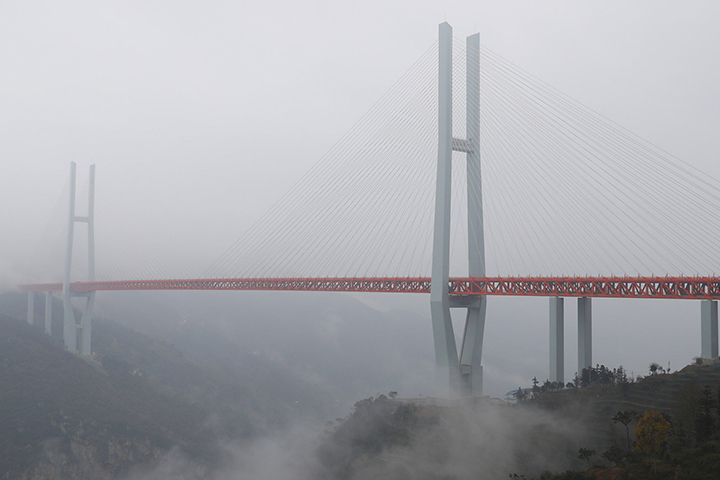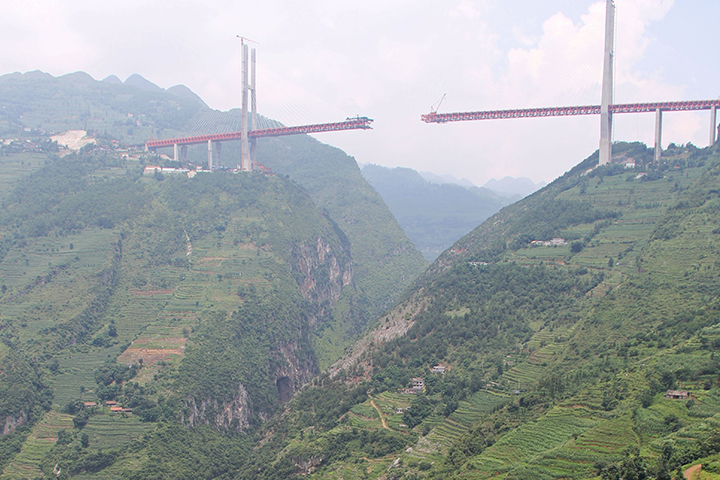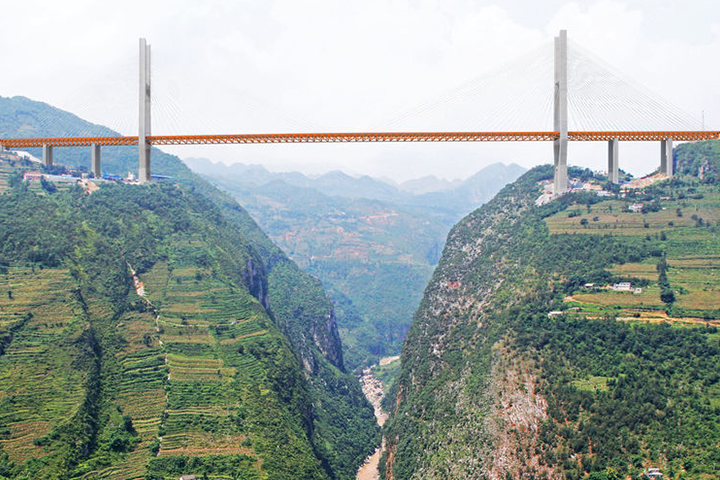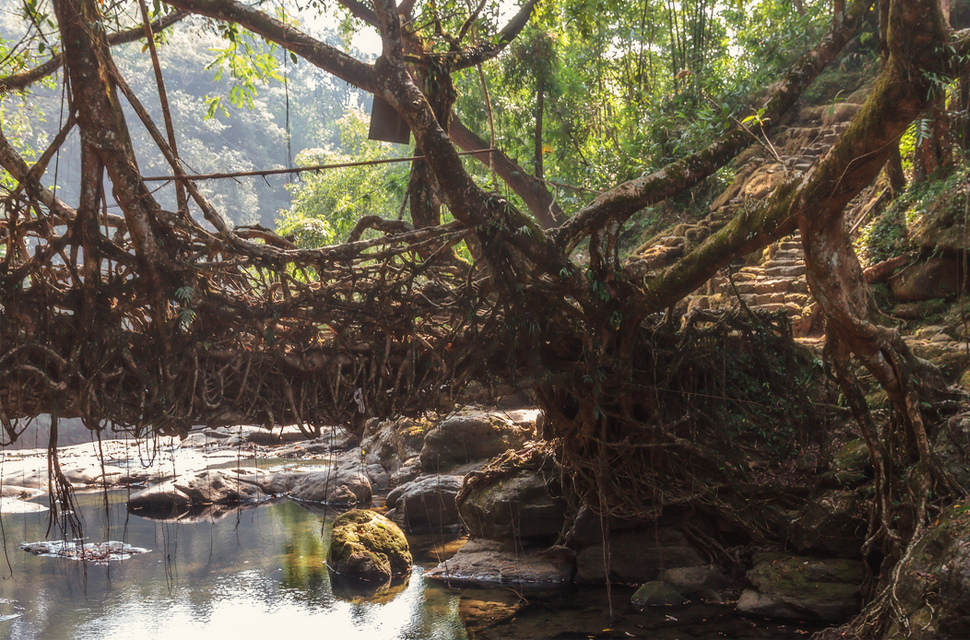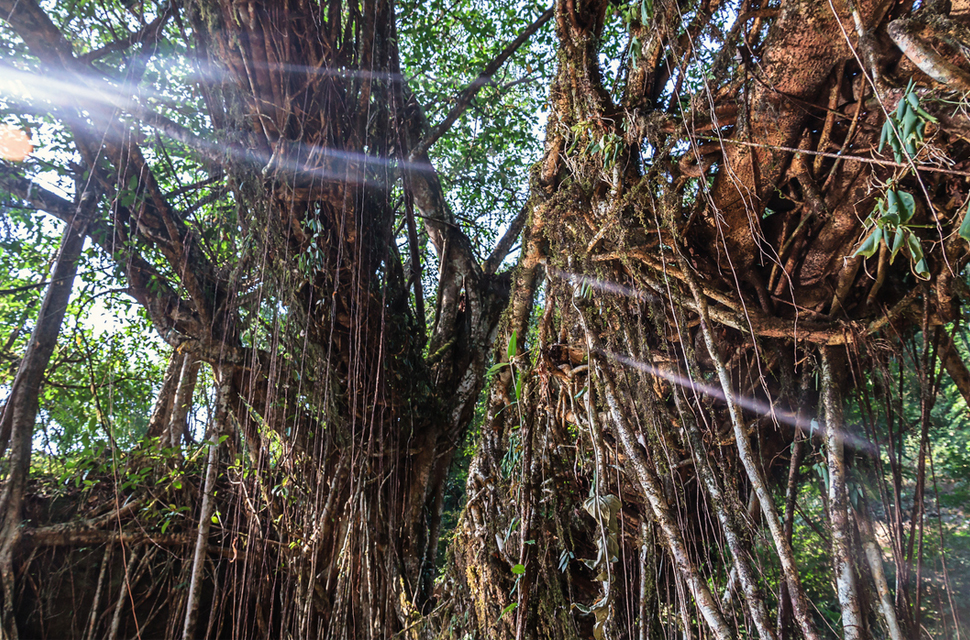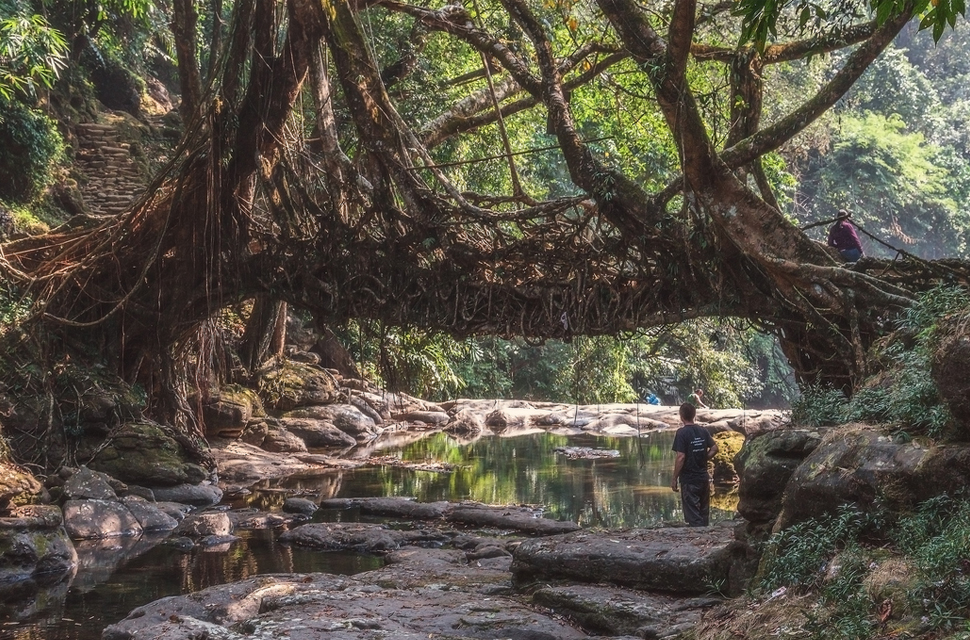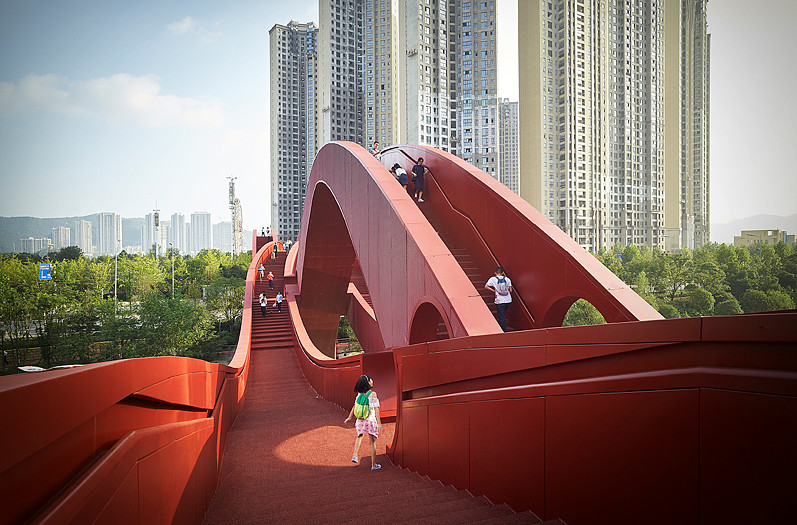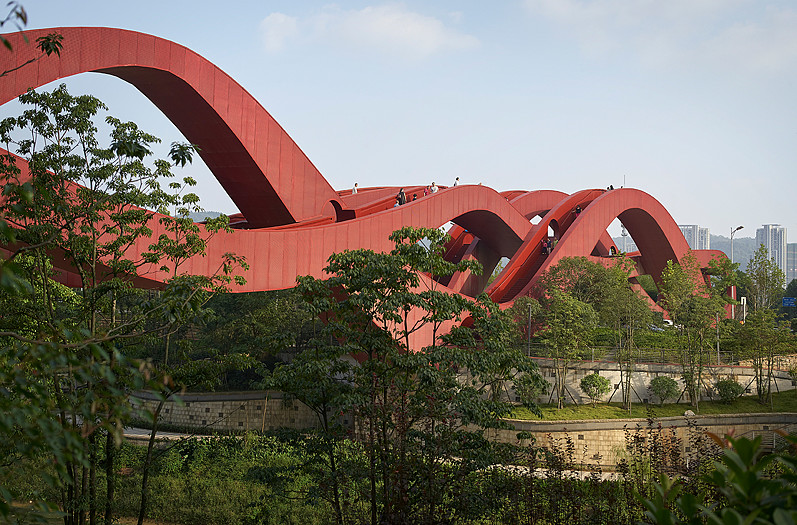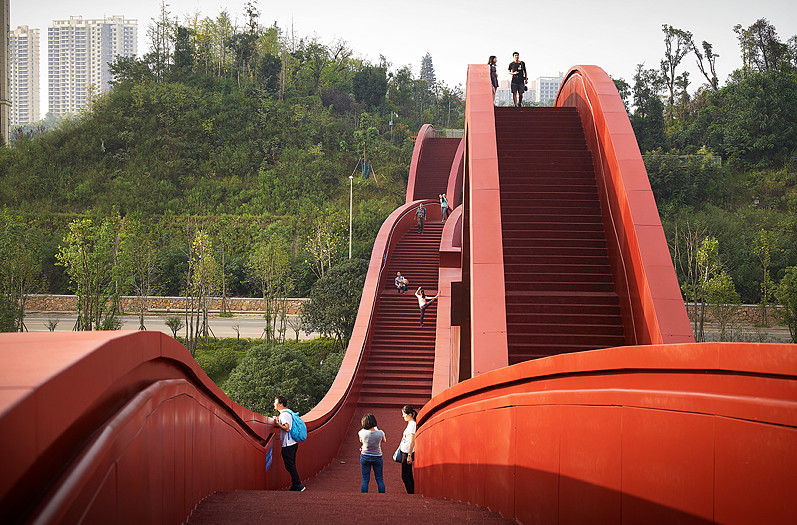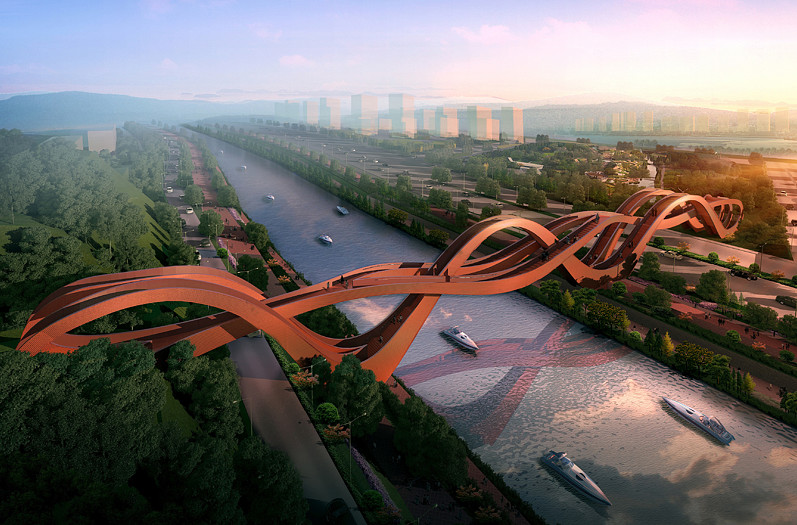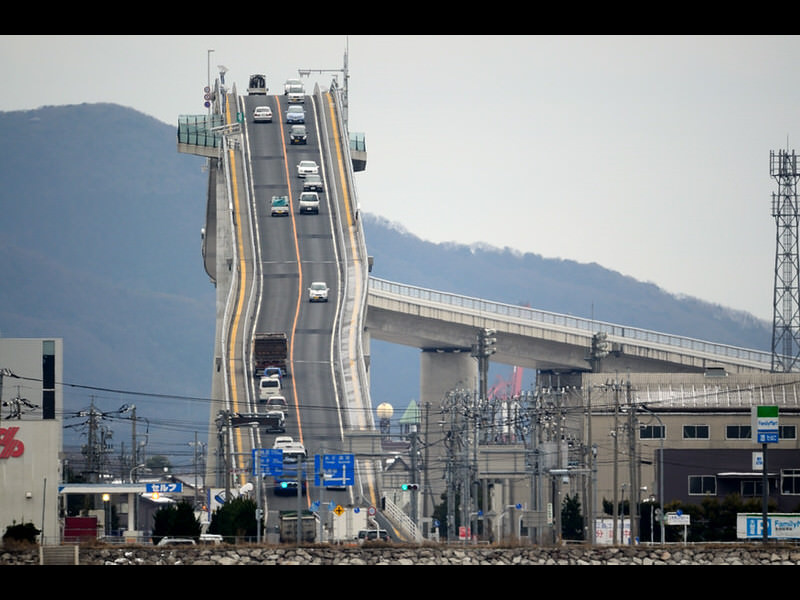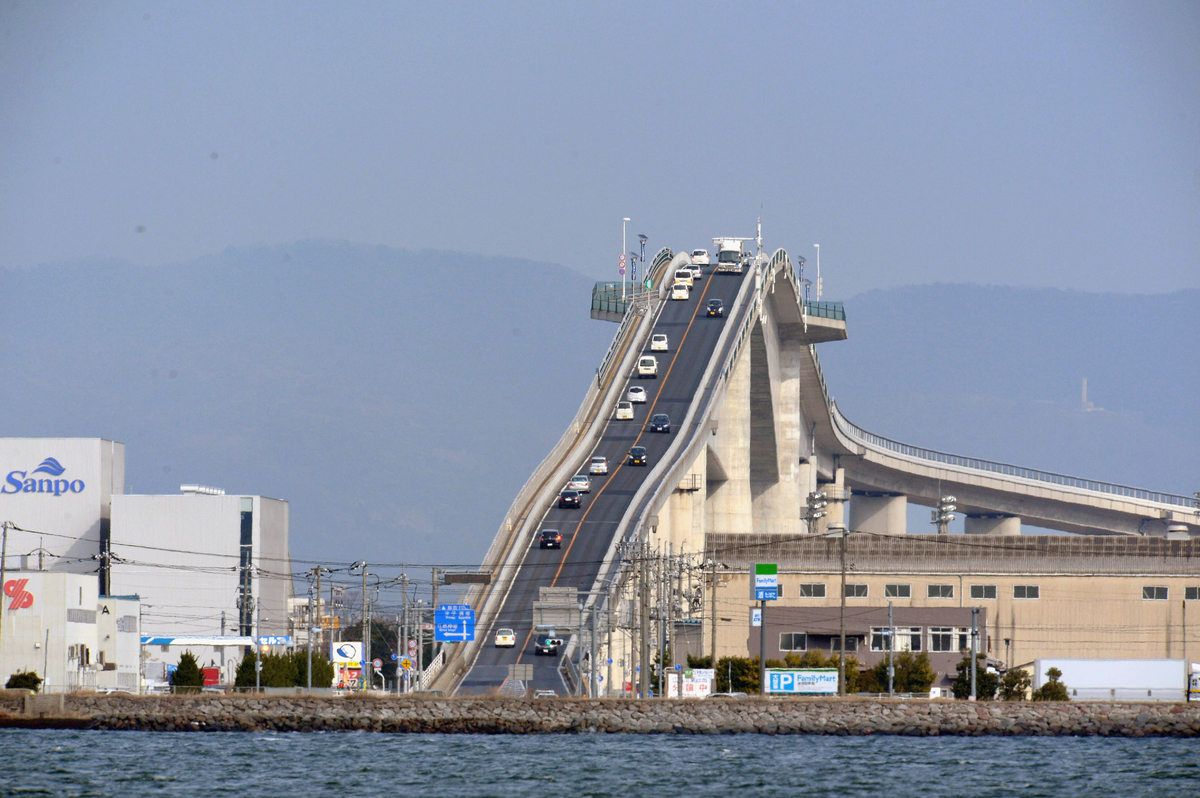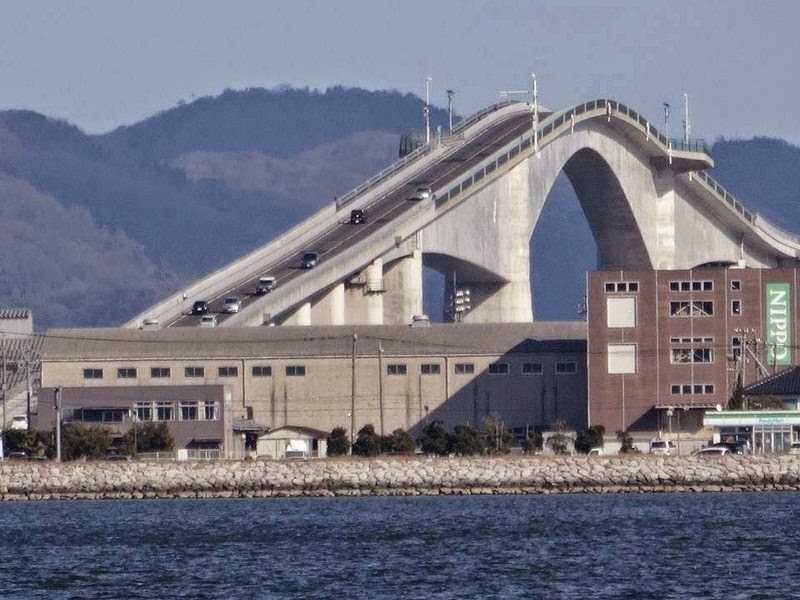You likely use them every day, but have you ever stopped to consider how incredible bridges are? They’re massive spans of concrete, metal, and wires that weigh thousands of tons, yet remain standing even through destructive and violent natural disasters like earthquakes, floods, and hurricanes.
Bridges are also key to the way we move and serve as an important tool for many commuters. Despite this, how often do you read a piece extolling the greatness of bridges, or hear an ode to their wonders? Not often enough, by our measure. Let’s correct that, shall we? Here’s a quick sampling of the biggest bridges out there.
Akashi Kaikyo Bridge
The longest suspension bridge
| Location | Year completed | Length | Architect |
| Japan | 1998 | 2.43 miles | Satoshi Kashima |
Suspension bridges are feats of architectural engineering. Think about it: A giant structure of wires and pylons manipulating tension and compression to allow for a single span of heavy material to be suspended in air, thus letting it bridge wide chasms and bodies of water. The Golden Gate Bridge is a suspension bridge, but the Akashi Kaikyo Bridge (aka the Pearl Bridge) holds the title for the world’s longest. This 2.4-mile-long bridge spans the Akashi Strait, connecting the city of Kobe on the Honshu mainland with Awaji Island. Since 1998, the bridge has carried six lanes of traffic and approximately 23,000 cars a day between the two towns.
The impressive central span ranks as the longest in the world at 1.24 miles long, and the bridge itself is built to withstand a magnitude 8.5 earthquake. In fact, during construction the 1995 Kobe Earthquake actually forced the two central towers further apart, making the center span three feet longer than it was originally designed. But earthquakes aren’t the only natural disaster the Akashi Kaikyo is built to withstand. The region is also prone to typhoon activity, so designers also built it to withstand 180mph winds too.
Hong Kong-Zhuhai-Macau Bridge
The longest cross-sea bridge
| Location | Year completed | Length | Architect |
| China | 2018 | 31 miles | ARUP |
China long ago cemented itself as one of the leading countries when it comes to bridge building, and the Hong Kong-Zhuhai-Macau Bridge only further cements the country’s reputation. At 31 miles in length, it is the longest cross-sea bridge in the world, twice as long as the country’s Jiaozhou Bay Bridge, the former longest bridge in the world.
Hong Kong-Zhuhai-Macau has completely changed transportation between the cities. The former inland route between Hong Kong and Macau is a four-hour trek: On the bridge, travel time may be as little as 30 minutes. Chinese officials hope that the bridge spurns economic development in southern China, one of the country’s poorest areas. At the same time, it strengthens Hong Kong’s position as the economic heart of the region.
While the bridge is the longest cross-sea bridge, it actually consists of two sections and three artificial islands. Connecting the two sections is a 1.7-mile tunnel closer to the Hong Kong side, which gives enough space for large shipping vessels to pass through.
Not everything has gone according to plan, however. Construction began in 2009, but ongoing issues with land reclamation caused major delays. Construction on the bridge ended in mid-2017, but paving of the bridge wasn’t completed until early in 2018. The cost of the bridge is staggering: At $18.3 billion, it is one of the most expensive in the world.
Lake Pontchartrain Causeway
The longest continuous bridge over water
| Location | Year completed | Length | Architect |
| Louisiana, United States | 1956 | 23.87 miles | Louisiana Bridge Company |
The Hong Kong-Zhuhai-Macau Bridge currently has the longest bridge span of any of the bridges on our list in the world in aggregate at 30.1 miles, but the longest continuous span over water is the Lake Pontchartrain Causeway in Louisiana. It is a 23.87-mile-long, low-level trestle bridge that lies across Lake Pontchartrain and connects New Orleans with Mandeville on the other side, as well as the rest of the southeastern United States without having to drive around the lake.
Following the completion of construction, communities on the north shore of Lake Ponchartrain saw financial benefits as they were now included in the New Orleans metropolitan area. Drive times were reduced by nearly an hour. With a speed limit of 65mph, you can be across the bridge in about 20 minutes or so.
While not necessarily built to withstand major hurricanes, the Causeway was able to withstand the storm surge of Hurricane Katrina in 2005 with relatively little damage. The bridge itself played a crucial role in getting in emergency supplies to the city of New Orleans and only was closed for three weeks following the storm — the only time the Causeway had ever closed to traffic since its opening.
Millau Viaduct
The tallest bridge
| Location | Year completed | Length | Architect |
| Aveyron, France | 2004 | 1.53 miles | Norman Foster, Michel Virlogeux |
We’ve given a lot of attention to bridges with impressive lengths, but that isn’t the only measure that makes a bridge noteworthy. The tallest bridge in the world — meaning the height of the structure’s tallest point — is the Millau Viaduct, located in Aveyron, France. The Millau Viaduct is a stayed-cable bridge that stretches 1.5 miles across the Tarn River Valley. The expressway lanes are 890 feet at its highest point above the Valley floor, but the structure itself towers another 235 feet above for a total height of 1,125 feet, making it an iconic fixture of France’s countryside.
Routinely heralded as one of the greatest feats of modern engineering, the bridge’s iconic look and the impressive engineering behind it are the result of the viaduct’s cable-stayed design, which uses massive pylons to hold thick steel cables that bear the weight of the structure’s spans.
Duge Bridge
The highest bridge
| Location | Year completed | Length | Architect |
| Guizhou, China | 2016 | 4,400 feet | Peng Yundong |
Tallest is one thing, but highest is another — and by highest we mean the length between the bridge’s span and the lowest point of the ground beneath it. That record belongs to the Duge bridge (also known as Beipanjiang Bridge Duge) in Guizhou, China. While the cable-stayed bridge itself is only 4,400 feet long, it connects two sides of a deep valley. The span floats a daunting 1,854 feet above ground at the deepest point, and could fit New York City’s One World Trade Center underneath it with another 80 feet or so to spare.
Beipanjiang Bridge Duge is not alone in Guizhou Province. Fun fact: The region has more of the world’s highest bridges than every other country on earth combined, and by 2020 there will be more than 250 bridges at heights greater than 330 feet in the province. While that might seem like a lot, all those bridges serve an important and necessary function. Before serious bridge construction began, traveling through Guizhou’s mountainous and ravine-filled countryside was difficult, with most transportation taking place on small, two-lane roads.
Other notable bridges
India’s Living Root Bridges
In the Indian state of Meghalaya, in the northeastern part of the country, there is a remarkable practice of training fig trees to grow into bridges. The caretakers slowly but surely manipulate the tree roots as they grow, pushing them along and weaving them into walkways and river crossings. The process can take up to 15 years, but once complete, the bridges are usable for between 500 and 600 years. As the trees grow, the bridges become sturdier thanks to the strengthening and thickening of the roots. The bridges also have to particularly useful attribute of being self-renewing, especially given they don’t require the same sort of upkeep as man-made structures. Plus, they just look cool.
Lucky Knot Bridge
| Location | Year completed | Length | Architect |
| Changsha, China | 2016 | 600 feet | Next Architects |
Another cool pedestrian bridge comes from China-based Next Architects. These designers got their inspiration from the Mobius ring — which is essentially a ring that twists — and knotting, a form of Chinese folk art that utilizes knots to create decorative shapes. The bridge passes about 78 feet over a river, and spans more than 600 feet in length. Three pedestrian lanes slink up and down across its spine, connecting two parks on opposite sides of a river.
Eshima Ohashi Bridge
| Location | Year completed | Length | Architect |
| Chugoku, Japan | 2004 | 5,577 feet | NEXT Architects |
You’ll feel like you’re about to get on a roller coaster while gazing at Japan’s Eshima Ohashi Bridge, but it’s more of an optical illusion than anything else. The Inception-evoking structure quickly became an internet sensation upon its completion in 2004, namely because a slew of viral images made the bridge’s grades look steeper than they actually are. In reality, the grades on either side are about 5.1 and 6.1 percent, and those who have traveled over the bridge say it’s no different than driving over a hill. Still, the actual grades don’t make the pictures any less terrifying.
